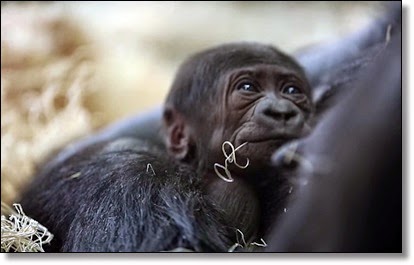Tiny monkeys no bigger than a thumb are being sold
illegally in China and used as accessories by the country's nouveau riche.
These little primates are thought to be pygmy marmosets,
the world's smallest monkey, they are being priced at up to 30,000 Yuan
(£3,140), reports the People's Daily Online.
Pygmy marmosets are native to rainforests of Western Amazon
Basin in South America, but they are becoming increasingly popular as exotic
pets in China especially as gifts to celebrate the Year of the Monkey.
According to the report, the tiny animals have been given
the nickname of 'thumb monkeys' in China and they have become the new star pet
among wealthy people in the country.
One such man surnamed Chen is the owner of a jewelry
business.
He showcased what he referred to as a 'New Year mascot' on
China's Twitter-like social media platform Weibo.
His post said: “Snow skin leopards and red-crowned cranes
have nothing on my New Year's gift. Please meet Xiao Shen.”
A wave of comments among his friends on WeChat came after
the post.
The monkeys are smaller than mice and cling on to a
person's thumb as if to be hugging it.
An official expert who was not named spoke to local
reporters: “Buying and selling are certainly not legal. Not only one governmental
bodies are supervising this.”
The official also said the monkey is not native to China,
so it not only involves the protection of wildlife, but also quarantine.
They have to be able to adapt to the environment, as pygmy
marmosets are native to the Amazon, survival in China could be extremely
difficult.
What You Need to Know About Pygmy Marmosets:
- Pygmy marmosets are the smallest monkey's in the world.
- They average about five inches, with a tail that grows to
about eight inches.
- Native exclusively to rainforests of Western Amazon Basin
in South America.
- They like to eat grasshoppers and make high pitched clicks,
squeaks and whistles.
The pygmy marmoset is becoming increasingly popular as an
exotic pet, but they are very hard to keep.
International Union for Conservation of Nature's have
listed them on their red list of endangered species.
They are undergoing some localized declines, due mainly to
habitat loss in the rainforests and international trade.
Source: International Union for Conservation
The tiny monkeys are becoming increasingly popular as
exotic pets for their cuteness and size but they are very hard to keep.
According to a-zanimals.com, when a baby pygmy marmoset is
taken away from the family it can often die quickly due to depression.
What a spokesman from the World Animal Protection said about
keeping these animals as pets:
“It is obvious to see why these incredibly endearing
animals have appeal but people must remember they are wild animals and they
must live out their lives in their natural environment – not as a curio for
someone as a pet.
They have specific needs that cannot be met in a domestic
environment and keeping them as pets is not only cruel but highly
irresponsible.”
Pigmy marmosets are on the International Union for
Conservation of Nature's red list of endangered species.
They are listed as 'Least Concern' as the species has a
relatively wide distribution range, and there are no major threats resulting in
a significant population decline.
However, the report said they may be undergoing some
localiSed declines, due mainly to habitat loss in the rainforests and
international trade.













